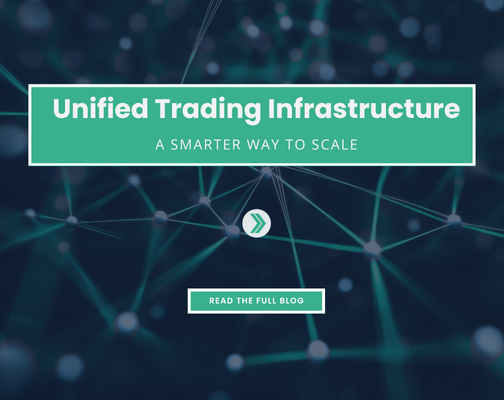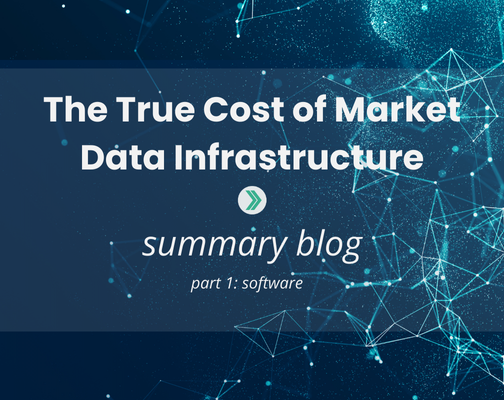The Oracle Effect: Why 24/5 Trading Is No Longer Optional
Oracle’s overnight surge wasn’t just a win for shareholders — it was a preview of what’s to come for global markets. When news breaks after 4 p.m., trading no longer pauses until morning; it accelerates. In today’s market, advantage belongs to those who can act instantly. Waiting for the opening bell is no longer enough — 24/5 trading is the new norm.
According to Reuters, “Oracle’s shares jumped about 36.7% on Wednesday to a record high, putting the company on track to join the trillion-dollar valuation club and propelling co-founder Larry Ellison closer to the world’s richest list.”
Although dramatic, this surge was not a one-off anomaly — it was a direct result of market-moving news breaking outside of traditional trading hours. This event highlights both the risk and opportunity of the new 24/5 trading environment. This new normal has marked the end of an era: the age of reacting to news the next morning is over. To stay competitive, firms and investors must adapt to a continuous, global trading cycle.
The following article details the drivers and implications of this major market shift and offers some actionable next steps for capital markets firms to help them accommodate the shift.
The Wake-Up Call: Oracle’s After-Hours Explosion
Oracle’s surge wasn’t random. The company reported exceptional Q1 fiscal 2026 results fueled by AI infrastructure demand, a record 359% increase in remaining performance obligations, ambitious revenue projections for its cloud business, and the launch of a new multi-cloud strategy built around the Oracle AI Database.
The real story wasn’t the earnings call — it was the clock. Most of Oracle’s move happened when U.S. markets were closed. Traders without after-hours capability watched the opportunity pass in real time
What is 24/5 Trading and Why It’s Inevitable
The shift to 24/5 trading is already reshaping the capital markets landscape. 24/5 trading refers to the ability to trade continuously from Sunday evening through Friday afternoon, allowing participants to react in real-time to global market events as they unfold.
Futures and options have paved the way, and equities are quickly following suit. The benefit is clear: around-the-clock access eliminates overnight price gaps and allows traders to react to information as it happens, wherever it happens.
According to Exegy CTO Arnaud Derasse, clients on both the sell side and buy side show interest in being connected to new exchanges:
“There’s a willingness to be connected to those markets and potentially see what liquidity is available on these markets overnight,” he said during a recent webinar hosted by The TRADE, citing “FOMO (fear of missing out) effects” as a potential driver of this demand.
However, regulatory frameworks have not yet caught up with the pace of innovation. In U.S. equities, Reg NMS does not currently apply outside of standard trading hours, meaning there are no protected quotes, National Best Bid and Offer (NBBO), or route-away regulations enforced during after-hours sessions. Traders assume greater responsibility and risk when executing without these price protections.
Drivers of the Shift
What caused the meteoric rise of the 24/5 trading period? Several factors contribute to this shift, most notably:
- Global information flow: Market-moving events now break on Asia’s morning or Europe’s evening, creating volatility long before U.S. markets open.
- New liquidity venues: Platforms such as Bruce ATS, MOON ATS, and OTC Overnight, all examples of alternative trading systems (ATSs), are expanding after-hours access and attracting institutional interest.
- Cultural momentum: Retail investors demand the same opportunities as institutional players.
- Technological advancement: Infrastructure can now support continuous data ingestion and execution across time zones.
As 24/5 trading gains momentum, new ATSs are proliferating and steadily drawing liquidity away from traditional exchanges. This dispersion is forcing institutions to reconsider where and how they trade. Nonbank liquidity providers (NBLP) are already active in these extended markets, capturing opportunities that legacy players risk missing. Meanwhile, retail traders are demanding access to these same venues, and major exchanges have signaled that around-the-clock trading is no longer a question of if but when.
For established institutions, however, joining this expanded market isn’t just a strategic decision, it’s an operational one. Building the infrastructure to support continuous trading comes with significant complexity, cost, and regulatory risk. While firms recognize the competitive imperative, few can justify the internal investment required to achieve real-time global coverage at scale.
The Operational Imperative: From Traditional Hours to Global Coverage
For most firms, trading speed is no longer the constraint—infrastructure agility is. As new 24/5 venues emerge and clients expect instant access to overnight markets, firms are finding that the real competitive edge lies in how quickly they can scale coverage and deploy infrastructure.
The challenge is universal. On the sell side, banks face mounting client demand for global access but can’t afford long lead times to onboard new markets or feeds. On the buy side, quant funds and market makers are fighting a different clock: alpha decay. As strategies lose effectiveness faster than ever, the ability to expand into new venues quickly can determine how long a strategy remains profitable.
Yet adding new markets isn’t as simple as flipping a switch. Every new venue requires infrastructure, engineering, and operational support, each one multiplying complexity and cost. Exegy’s two-part True Cost of Real-Time Market Data Infrastructure analysis quantified the scale of that challenge: firms that build coverage in-house face costs up to 8× higher and deployment times up to 7× slower than those using managed infrastructure. These figures underscore how difficult (and expensive) it is to keep pace as the global trading landscape expands.
As highlighted during the 2025 NYC Client Summit, the table stakes for market data infrastructure are rising fast. Executives from across the industry agreed that success now depends on being fast, stable, and nimble—able to integrate new markets and react to disruptive forces without sacrificing determinism or stability. To go back to the point, liquidity fragmentation and the growth of nonbank liquidity providers have fundamentally changed the market’s structure. With half of all trading activity now occurring on alternative venues, he noted, traditional players must rethink their infrastructure to match this pace of change.
The lesson is clear: building and maintaining a truly global, always-on infrastructure requires resources and expertise most firms can’t (or shouldn’t) carry alone. Partnering strategically with technology providers who can assume that burden doesn’t just control cost; it preserves speed, protects alpha, and enables firms to meet client expectations in real-time.
The Lesson: Beyond Opportunity, a Matter of Survival
The Oracle event was a wake-up call—a reminder that the market’s rhythms have permanently changed. It showed that 24/5 trading is no longer a niche or an experiment but an operational reality. For firms across capital markets, this shift is not just an opportunity for ambitious traders; it’s a matter of competitive survival.
Success in this environment demands a global presence, an infrastructure that never sleeps, and a service model that can support trading activity in every time zone. The ability to act instantly, to connect to new venues, process overnight data, and respond to emerging liquidity, has become a defining measure of readiness.
As 24/5 trading continues to expand through 2025 and beyond, firms will increasingly look to partners who can shoulder the infrastructure burden and provide continuous, real-time coverage. Exegy is among those already operating under that model, with client support across St. Louis, New York, London, Paris, Belfast, and Manila—a true “follow-the-sun” approach built for an always-on market.
Is your firm equipped to thrive in this new 24/5 world—or will you be left waiting for the opening bell?



